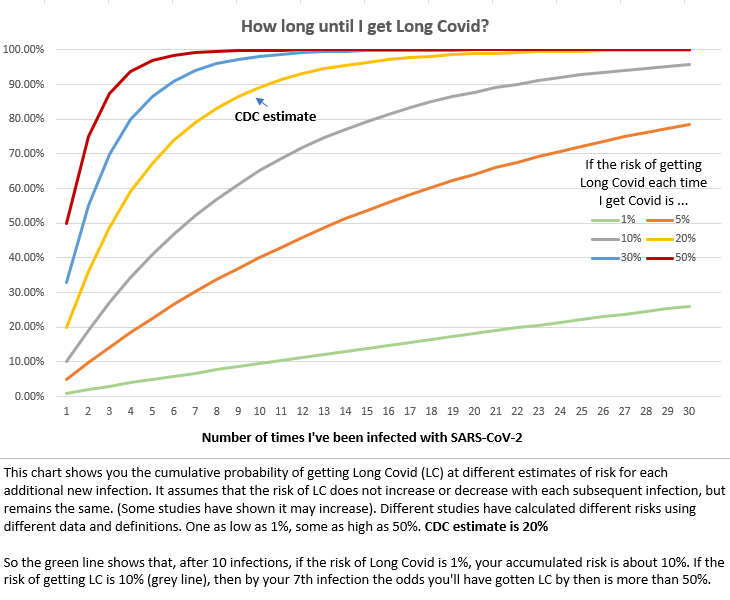
Entrepreneur. Epidemiologist. IT guy. Australian in Sweden and Ukraine.
#plantpowered 🌱 #kyokushin 🥋 #longcovid (recovered)
6 subscribers
How to get URL link on X (Twitter) App



 (1) The graph assumes that risk from any particular infection neither increases nor decreases. Much like the odds of rolling a 6 remain the same each dice roll, but the more you roll, the more likely you'll eventually get a six. I've seen studies supporting both directions.
(1) The graph assumes that risk from any particular infection neither increases nor decreases. Much like the odds of rolling a 6 remain the same each dice roll, but the more you roll, the more likely you'll eventually get a six. I've seen studies supporting both directions.


 @Aftonbladet Apparently it is mentioned right at the end! (we were reading it in a supermarket checkout)
@Aftonbladet Apparently it is mentioned right at the end! (we were reading it in a supermarket checkout)https://twitter.com/bills_n_thrills/status/1680601840273031174?s=20

https://twitter.com/DavidSteadson/status/1548340674801438721This week a new study was published in @jama that estimates risk of Long Covid on first infection at 9.7%. For those with multiple infections, the estimate was just over 20% - exactly what the 10% risk grey line in the graph above suggests for people with 2 to 3 infections.



https://twitter.com/CDCDirector/status/1608956958912155648The Reproduction Rate is a measure of how fast a disease is spreading. If it's 1, cases are stable, every infected person on averaging infecting one other person. If it's bigger than 1, cases are increasing. If it's smaller than 1, cases are decreasing.

 (The odd gap is when they stopped reporting because the pandemic was over.🫤)
(The odd gap is when they stopped reporting because the pandemic was over.🫤)

 With current estimates of the risk of Long Covid at approx 20% at each infection (yellow line), and policies leading to an expected 2-3 infections per year, **the vast majority of people can expect to have suffered some form of Long Covid within the next 2-3 years**
With current estimates of the risk of Long Covid at approx 20% at each infection (yellow line), and policies leading to an expected 2-3 infections per year, **the vast majority of people can expect to have suffered some form of Long Covid within the next 2-3 years**



 It's been reposted by Nobel Prize winning virologists
It's been reposted by Nobel Prize winning virologistshttps://twitter.com/ProfPCDoherty/status/1509657577852129283?s=20&t=W0bwoIpK81VlBWvOu0UlBA
https://twitter.com/kprather88/status/1509659061028941824They are 100% correct and those inertia-bound scientists around the world spouting scientific nonsense in defence of ... well, nothing but medical "tradition" need to adjust their world views to fit the science, not the other way around.

